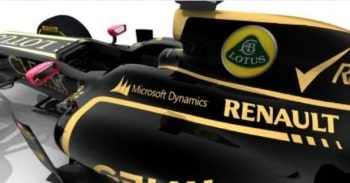When a Lotus F1 car won the Australian Grand Prix last week a whole bunch of Microsoft Dynamics employees were more excited than the ice cool Finn who won the race. If you looked really carefully at the winning Lotus you just might have noticed the words “Microsoft Dynamics” along the flanks of the car behind the driver’s head.
What is Microsoft doing with ads on a Formula 1 car? Well, F1 is big business; it develops and uses advanced technology. Competition breeds innovation. Jet powered planes, radar and early computers were all fast tracked under the competition of war. But war is a bloody competition; extreme, peaceful competitions like F1 provide an acceptable alternative to stimulate innovation as teams try to outperform each other.
F1 teams need good systems and Lotus has partnered with Microsoft to use one of its Dynamics solutions. Microsoft undertook to replace the myriad of in-house developed and proprietary systems at Lotus with a single Enterprise Resource Planning (ERP) system.
F1 race cars are high speed data collection units; they measure everything from temperatures and tyre pressure, to G-forces, and component movements. Fifteen megabytes of data is sent to the team pit via microwave links during a lap while fifty gigabytes of data is collected over a whole race.
Francois Puentes of Lotus said: “At an advanced level, ERP should enable the Lotus F1 team to run more efficiently as a whole. It will allow us to bring performance-increasing parts to the car more quickly and more effectively than the opposition [and that] equals race wins.”
Microsoft has five full-time staff at the Lotus factory in Enstone, England who are probably rejoicing the success of their high profile customer and partner.







